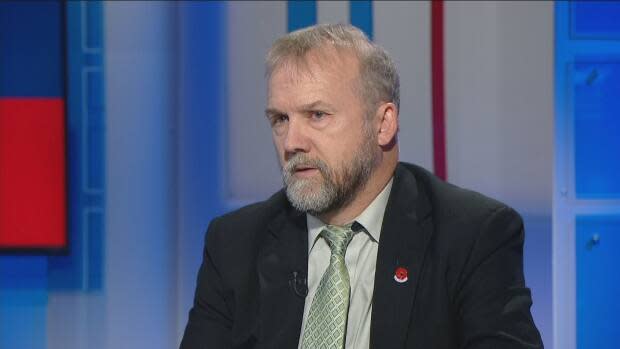Does P.E.I. have a labour shortage? Or a job surplus?

P.E.I.'s unemployment rate rose in August as more Islanders entered the workforce, providing some relief for employers coping with an ongoing labour shortage.
The unemployment rate moved up to 7.3 per cent last month, still very low from a historical perspective but more than two percentage points higher than P.E.I.'s record low of 4.9 per cent in June.
The rate rose despite an increase in the number of jobs available, as more Islanders started looking for work.
That boost in potential job applicants should be welcome news for employers, who have been complaining about a shortage of workers since the spring of 2021, when the P.E.I. economy began to emerge from the worst effects of the COVID-19 pandemic.
But a closer look at the numbers suggests the problem could be due to an excess of jobs rather than a true shortage of workers.
Since 2016, the workforce on P.E.I. has grown about 15 per cent. While that is strong growth, it hasn't kept up with the growth in the number of jobs, up almost 20 per cent.

"As an economist, I don't want to say there's too many jobs. We look at jobs as kind of a good thing," said economist Fred Bergman, a senior policy analyst at the Atlantic Provinces Economic Council, or APEC.
"It's nice to be able to work and take care of your family and your household."
Jobs and labour force on P.E.I.
But P.E.I. may to some degree be a victim of its own success, said Bergman.
Growing population
In 2015, then-premier Wade MacLauchlan launched a strategy to grow the province's population with an eye to blunting the impacts of P.E.I.'s aging demographic.
The strategy was based on the premise that P.E.I. had more older Islanders leaving the workforce than young ones entering it, and this would lead to a labour crunch. Most of the Western world shares the problem.
By encouraging immigrants and interprovincial migrants to settle in P.E.I., MacLauchlan's government hoped to boost the Island's population to 160,000 by this year.
It hit that target early, and by April of this year, P.E.I. had nearly 168,000 residents.
But rapid population growth comes with a cost.
"As we bring in more people, whether it's through interprovincial migration or international migration patterns, we need to house them, we need to help them find a job," said Bergman. "For those that are coming from another country, obviously we have to help them settle in and adjust, maybe provide assistance with language training if required, so lots of things to do."
All those things — housing, settlement services, language training — require people to deliver them. Thus, they create jobs. And, in general, more people have more money to spend and require more services, and so still more jobs are born.
Islanders' will to work unchanged
Whether there are too few workers or too many jobs are different sides of the same labour shortage coin.
One issue that can perhaps be put to rest, however, is the notion that nobody wants to work any more — young people in particular. There is no statistical evidence of that.
Participation in labour force on P.E.I.
More Islanders than ever are in the labour force in 2022. Participation rates — that percentage of the population that is either working or looking for work — are steady, with about two-thirds of Islanders aged 15 and over in the workforce.
For Islanders aged 15 to 24, it is a little higher than that, at about 70 per cent.
Where the participation rate is down, slightly, is for Islanders aged 55 and over.
More aging out than aging in
The economic rebound after the pandemic's worst times was possibly a bit too much for P.E.I.'s existing labour force to deal with, said Bergman. More businesses reopened, and there was a surge in immigration following limits to migration imposed in 2020 to slow the spread of COVID-19.

But the shortage of labour due to an aging population remains real, Bergman stresses. APEC estimates that on P.E.I., only eight people are getting old enough to join the labour force for every 10 people aging out of it. This ratio is better than the 7:10 ratio seen in Atlantic Canada as a whole, but it is still not sustainable.
"P.E.I. might not have the same-aged workforce as say, Newfoundland and Labrador, but certainly it's still feeling impacts of an aging demographic like the rest of the region," said Bergman.
Nearly 12 per cent plan to leave
An additional question on the Statistics Canada Labour Force Survey last month also points toward further trouble ahead, Bergman noted.
The survey asked Canadians about their intentions to leave their jobs.
The proportion planning to leave their job within the next 12 months was 11.9 per cent — almost double the level recorded in January, when the question was last asked.
"With labour attrition on the rise nationally, for various reasons, this will continue to put upward pressure on job vacancies," said Bergman.


